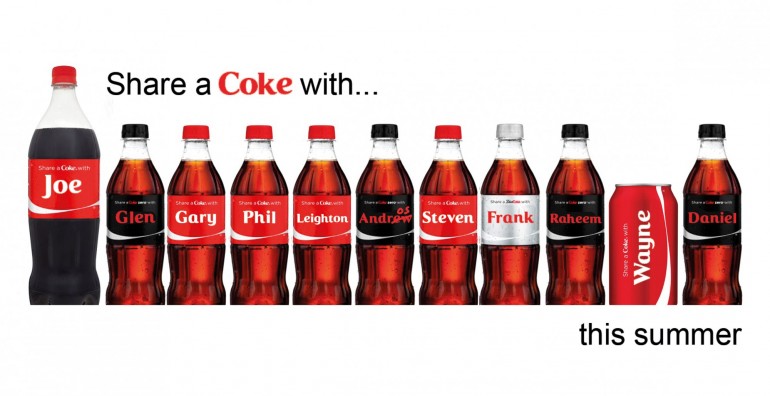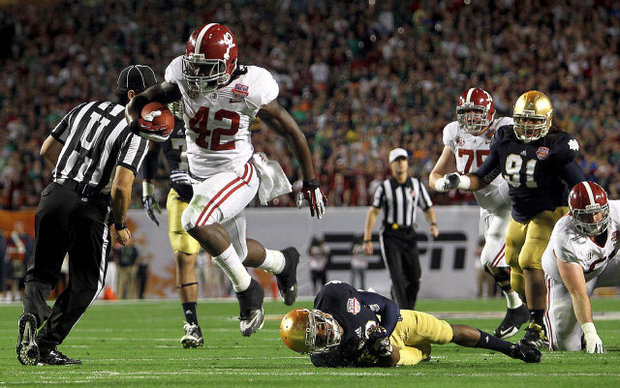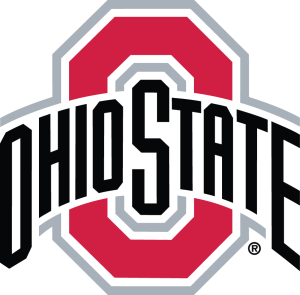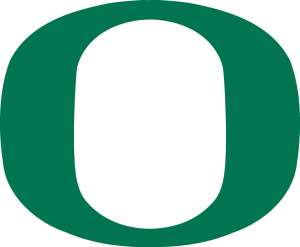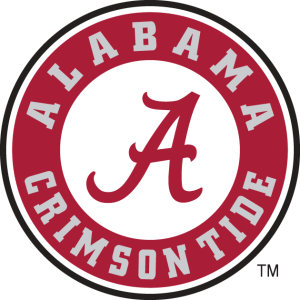Making Brand Decisions that Help Your Branding
The days following Thanksgiving hold the title as some of the busiest of the year for shoppers. There are millions of looking to purchase and billions of dollars being spent. For some brands, this year was different – instead of focusing on sales or discounts, they found the opportunity to make brand statements bigger than what they have on sale.
A number of big brands, including T.J. Maxx, Marshall’s, HomeGoods, DSW, Apple, Nordstrom and Sam’s Club, bucked the trend of opening their doors on Thanksgiving evening, making a point to emphasis their brands’ importance on valuing time with family. Of these, one brand’s strategy to tie the decision back to their brand attributes made it stand out among this group.
REI took the holiday weekend to make a big statement about their brand– closing their doors on both Thanksgiving Day and Black Friday.
They encouraged their would-be-shoppers to “Opt Outside,” in alignment with the brand’s equity in adventure. REI wanted to show a different way to spend the weekend, encouraging potential shoppers to enjoy the great outdoors, a concept that fits in line with their overall brand strategy.
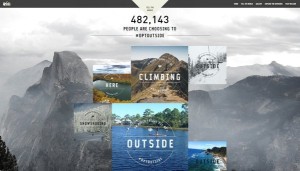 This branding effort took many forms beyond the initial announcement. For instance, REI made a website available where over 1 million people posted pictures of their outdoor adventure and created the hashtag #OptOutside to further encourage sharing their . The CEO of the company wrote a heart-felt message to shoppers and employees about the company’s values and the brand’s stance on enjoying the outdoors, including the line “a life outdoors is a life well lived.” Again, their messaging and strategies showed consumers that the REI brand is a lifestyle, and goes beyond their name and logo.
This branding effort took many forms beyond the initial announcement. For instance, REI made a website available where over 1 million people posted pictures of their outdoor adventure and created the hashtag #OptOutside to further encourage sharing their . The CEO of the company wrote a heart-felt message to shoppers and employees about the company’s values and the brand’s stance on enjoying the outdoors, including the line “a life outdoors is a life well lived.” Again, their messaging and strategies showed consumers that the REI brand is a lifestyle, and goes beyond their name and logo.
And while they didn’t process any online orders on Black Friday, customers still shopped on their site - SimilarWeb reported that REI saw a 10 percent increase in online traffic on Thanksgiving, and a 26 percent lift on Black Friday. Did the lift overcome dollars that could have been made in-store? Who knows? But the effect on the brand I believe will be lasting.
The greatest lasting impression may be on the brand’s equity in outdoor adventure. If there were some who questioned the brand’s true passion for the outdoors, that equity was cemented by their bold move on Black Friday.
The decision was a reminder to REI shoppers that the products sold through REI have consistent value and demand a premium. REI isn’t looking to push volume out the door and compromise value perceptions it has built year-round. Not participating in Black Friday, maybe more than anything, says that REI is different. They are a different kind of retailer, one less focused on revenue and more focused on experiences, especially experiences that are in line with their brand.
REI took the unorthodox route in its moves this past weekend, where it chose not to get caught up in the holiday hysteria. In doing so, they reinforced that sometimes what defines our brands and makes a lasting brand difference is not what we choose to do, but what we choose not to do. And the most successful of these brands don't just act in a vacuum - they act with a strategy that ties these decisions back to what their brand stands for, reinforcing the notion that they don't just walk the branding walk, but talk the branding talk.
Image Sources:
https://business.transworld.net/news/why-rei-wont-be-open-on-black-friday
https://newsroom.rei.com/multimedia/photos/holiday-2015/
Addison Whitney is a global branding firm with a passion for building strong brands.
To learn more about Addison Whitney, visit our website at AddisonWhitney.com, or contact us here.
Addison Whitney Health's Vince Budd Featured in PM360 Magazine
Addison Whitney Health Senior Vice President Vince Budd is featured in the latest issue of PM360 Magazine, with another edition of the "Brand Slam" series.
This month's "Brand Slam" article is titled "Get to Know More About Brand Naming." It focuses on the importance of partnering with branding and naming agencies who have an in-depth and extensive knowledge of the latest in branding regulations and trends.
A brief passage from the article is below, and if you'd like to read the entire post, you can find it here.
Get to Know More About Brand Naming
In the pharmaceutical branding world, the only constant is change when it comes to regulation among the global health authorities. Governing bodies from the FDA to Health Canada to EMA are in a continuous adaptation to evolve the process of gaining approval of a drug. These include many factors related to an asset’s development, up to and including the brand naming. And in this situation, knowing what is ahead of you is half the battle.
For instance, Health Canada recently released a new set of regulatory naming requirements for all drugs to be marketed in Canada. This is a big step in a new direction for the agency, and with this new direction comes new challenges for manufacturers developing products.
Therefore, it makes sense for pharmaceutical organizations to look to partner with those who have their finger on the pulse of these directional changes, and who have the processes in place to navigate the rough waters of change.
Addison Whitney is a global branding firm with a passion for building strong brands.
To learn more about Addison Whitney, visit our website at AddisonWhitney.com, or contact us here.
5 Verbal Branding and Naming Tips to Consider - Brannon Cashion's Clutch Interview Highlights
The research firm Clutch recently interviewed our own Brannon Cashion on the trends and best practices around naming a company. Brannon discussed several topics regarding what businesses should think about when working through the naming process and some trends he’s seen recently in naming.
With Addison Whitney’s long history of naming and branding experience, and his own extensive history in the industry, Brannon was able to offer a unique and informed perspective on the topic.
Building off of Brannon’s thoughts in the interview, we put together a list of five key points to consider when working through the verbal branding and naming process, complete with his thoughts from the interview:
1. Don’t just create a name, create a brand.
“The strength of a name is really the time it takes to go from a name to a brand... How quickly can it move from being a group of letters to really representing something, whether it’s a company or a product?”
This is the ultimate goal of a brand name – to become something beyond a descriptor for the company or product, and take on the full embodiment of what the brand represents. This is a crucial
indicator of name strength – not only determining how quickly it can move from “name” to “brand” but also how it holds up as a piece of the overall brand once it achieves that status. This happens over time, when the market audience gets to know the name alongside the product or company, and as they increasingly associate the name with the brand.
2. Take stock of where you are and where you want to go when naming.
“What should a business consider before beginning the naming process? It really depends on where they are and what the role of the name is. Are they going through a name change? Are they building a new company, product, or offering where there’s no name today? Those types of questions will fuel a lot of the direction and the things that they should consider.”
Many times, a name change is needed because the current name no longer fits who the company is or what their offerings include. If and when this occurs, the naming process the next time around should begin with a look at who the brand really is – what they currently embody and their aspirations for the future. Naming is not a one-size-fits-all exercise, and each process should be
tailored to fit the unique situation to which it is involved.
3. Consider your future brand even at the beginning of the naming process.
“A name that is more descriptive or aspirational around what you develop, one of your core attributes, or one of your competitive differentiators, those are names
that oftentimes can stand the test of time and be more long-term solutions, as opposed to a name that describes your first product, your first offering, or the competitive space that you’re in.”
Once you’ve taken a look at the connection between where your brand is today and where it wants to go, the verbal branding decision that comes next is deciding how much of a connection these two will have to the name. This impact is often overlooked, as it takes much more patience to watch the name grow along with the brand, instead of finding a name that fits right away, but has the potential to become outdated.
4. Think outside the box when determining your brand’s website address.
“A lot of times the URL is kind of their tagline of sorts. It’s not just about the product. We’ll register theirproducttagline.com, and that’s how they find this new product. I think the URL has become less of a requirement.”
People don’t just type exact URLs anymore when looking for a brand. With the rise of searches and the importance on SEO, the possibilities for brands when developing their online address have expanded greatly – there is more of an emphasis on including and matching key phrases in regards to your brand throughout your website, including the URL, opening the door to a number of new possibilities.
5. Take our word for it – hiring a naming company can help you throughout the process.
“In our view, hiring a naming company gives you an objective third-party who understands the pitfalls and the hurdles that you’re going to go through with this process. Hiring a naming organization can help with some of that process, with our strategies and tactics that have been proven over and over again.”
Naming is something that doesn’t often come naturally for companies. There exists the possibility that this lack of information or experience can trigger negatively-impacting steps or ideas, such as the involvement of emotion more heavily than is beneficial in the process. Naming companies such as Addison Whitney have the combination of years of experience on thousands or projects and tried-and-true processes which have been proven to produce successful results.
Addison Whitney is a global branding firm with a passion for building strong brands.
To learn more about Addison Whitney, visit our website at AddisonWhitney.com, or contact us here.
The Personalization of Branding
Coca-Cola personalized their bottles using the names of their audience in their "Share a Coke" campaign and made tattoo applicators out of their cans for their Latino-targeted "Celebrate Your Heritage" campaign. Snickers added mood indicators (grouchy, sleepy, whiny, etc.) to their packaging and Bud Light wrapped their cans in each NFL team’s logos and colors. Why are more and more companies using an increasingly personalized approach to packaging and branding?
For the consumer, this approach connects them to the brand on an individual level. It gives the brand a humanistic touch and turns the product into a part of life. It connects the product to something we already care about or feel; but why the tide of change now?
What about human behavior makes this approach relevant to today? The answer is in the behavior of sharing.
With the rise of our always-connected, social media-driven culture, consumers are choosing brands not just because of their prices or advertisements, but because those brands contain an aspect of their brand to which the consumer can connect – everything from a familiar logo or name to an emotional tie-in or, as is the case in this situation, the ability to “social media-ize” their purchase.
What is this made-up term and what does it mean for brands? To “social media-ize” a product is when it possesses characteristics that drive consumer actions to share and discuss it online. We’ve all seen the pictures from our Facebook friend of a coke bottle with their name on it, or the Instagram photo of your favorite team’s customized Bud Light can – and that is exactly the type of secondary action these brands want consumers to take.
The first action, of course, is to buy the product. But the search for second-level interaction and sharing is where true brand connections are made. If a consumer connects at a level with a brand to where they make the decision to publicize this connection online, it’s a sign of a developing brand loyalty or brand pride.
This brings us back to the trend of personalize packaging and branding. The main connection is along the lines of why people scream when a musician mentions their city in a concert, or why pictures are taken when you happen upon a road that bears your name – when we see outside objects (or in this case, brands) that we can personally connect with, it reaches a deeper level of care. In the case of personalized brand strategies, this care is a stepping stone to establishing brand loyalty.
Now if you’ll excuse me – I need to go find a Diet Coke can with “Matt” on it.
Image Sources:
https://www.facebook.com/snickers/photos/a.190457414461.156238.20645199461/10153550519214462/?type=3&theater
https://dailymail.com.ng/wp-content/uploads/2015/02/2086086_coke2_jpege59b8a3373855ccb169cfd02e45e9626.jpg
Addison Whitney is a global branding firm with a passion for building strong brands.
To learn more about Addison Whitney, visit our website at AddisonWhitney.com, or contact us here.
AW in Review - Addison Whitney Brand Salsa Recap 10.9.15
Welcome to another edition of "AW in Review", our roundup of our latest brand salsa and Addison Whitney news and posts!
Don’t forget, you can stay up-to-date with everything from Addison Whitney by joining the conversation with us on our social media channels – Twitter, Facebook, LinkedIn and Google+.
Would You Like a Minion Tic Tac? The Strategy of Brand and Consumer Product Tie-Ins
This morning, my 2-year-old son asked for his milk in a “Toy Story” cup, after requesting last night that I serve him “Minions” applesauce as he ate dinner on his “Cars” plate.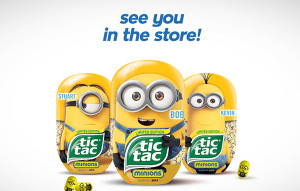
Now, this is either a testament to how demanding toddlers can be, or (and for the purpose of this branding-focused blog, this is the path we’re going to take) a testament to the success brands have when creating ties with everyday products. We’ve all seen the examples – everything from book bags and lunch boxes to toothbrushes and food items can be (and have been) branded in some way. Even more desirable is when the consumers begin to associate that particular item with that brand, as seen by my son’s descriptions of his requested items. Read More...
A Colorful Response
 “What’s your favorite color?” is a common question I get asked as a graphic designer. I usually respond with, “Well, what is the color being applied to?” Colors can make you feel a certain way. For instance, I like soft neutrals when it comes to painting my walls because it makes me feel calm, but bright red for a dress because I feel fun and exciting.” That’s my nerdy design answer to someone who was probably looking for a one-word answer like, “blue.”
“What’s your favorite color?” is a common question I get asked as a graphic designer. I usually respond with, “Well, what is the color being applied to?” Colors can make you feel a certain way. For instance, I like soft neutrals when it comes to painting my walls because it makes me feel calm, but bright red for a dress because I feel fun and exciting.” That’s my nerdy design answer to someone who was probably looking for a one-word answer like, “blue.”
But it’s true. In the article, What the Color of Your Logo Says About Your Company, Catherine Clifford states, “different colors are associated with different feelings.” She cites that 93% of purchasing judgments are made on visual perceptions and 84.7% of consumers cite color as their main reason for buying a particular product. Read More...
"Back to the Future" Branding
Sometimes, the best way to move forward is to take a look back. To look back at the best of what you have been in order to ensure the best that you will be.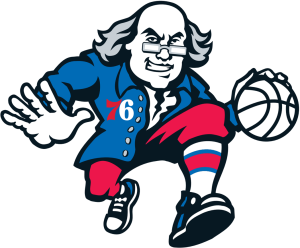
For brands, this rings especially true when working through a rebrand or a brand refresh. Especially when the brand you have is one of the few “iconic” brands on the market, coming with a built-in nostalgia and fond memories of the branding of yesteryear. However, this version of going back to the future comes with no worries of messing with the space-time continuum – in fact, tapping into a brand’s past can have positive impacts on its future. Read More...
How Your Brand Can Connect with Your Audience
 It’s no secret that one of the goals of a solid consumer brand strategy is to positively influence the brand awareness and connection with its intended customer base. We’ve all made purchasing decisions based on brands, and the best brand strategies have a goal to become one of those brands.
It’s no secret that one of the goals of a solid consumer brand strategy is to positively influence the brand awareness and connection with its intended customer base. We’ve all made purchasing decisions based on brands, and the best brand strategies have a goal to become one of those brands.
Connecting with your audience goes beyond logos and naming – it taps into creating a brand that has true, identifiable characteristics. People can’t tie their emotional purchasing to colors and words, but they can tie them to things that connect with who they are – or, who they’d like to be. Read More...
Addison Whitney is a global branding firm with a passion for building strong brands.
To learn more about Addison Whitney, visit our website at AddisonWhitney.com, or contact us here.
A Colorful Response
Today we are excited to have a guest blog from our Director of Visual Branding, Cathleen Foley!
"What’s your favorite color?" is a common question I get asked as a graphic designer. I usually respond with, “Well, what is the color being applied to?"
Colors can make you feel a certain way. For instance, I like soft neutrals when it comes to painting my walls because it makes me feel calm, but bright red for a dress because I feel fun and exciting.” That’s my nerdy design answer to someone who was probably looking for a one-word answer like, “blue.”
But it’s true. In the article, What the Color of Your Logo Says About Your Company, Catherine Clifford states, “different colors are associated with different feelings.” She cites that 93% of purchasing judgments are made on visual perceptions and 84.7% of consumers cite color as their main reason for buying a particular product.
Based on those facts, when it comes to building a brand, choosing the right color is so important. I frequently urge clients to step away from the “I like” mentality, as color is subjective.
For example, just because you like the colors blue and black as a Carolina Panthers fan, doesn’t mean those colors are appropriate for your brand. (Side note: biases can creep into blog examples too – go Panthers!) According to the psychology of colors, if your brand is imaginative and creative, purple might be the best color. However, if your brand is sophisticated, black is an appropriate choice.
I agree that when choosing the right color for your brand, color psychology should be evaluated. However, it doesn’t stop there.
When deciding on a color for a brand, you should also audit the competitive color landscape and make a business decision if your brand wants to fit in or stand out. A bright orange in the midst of a sea of blue could make the new brand pop. However, a blue color palette would be appropriate and help a new brand build off of existing brand equity in the space.
So whether you’re developing a new brand color palette or answering the what’s-your-favorite-color question, you can now explain the psychology behind your response!
Addison Whitney is a global branding firm with a passion for building strong brands.
To learn more about Addison Whitney, visit our website at AddisonWhitney.com, or contact us here.
“Back to the Future” Branding
Sometimes, the best way to move forward is to take a look back. To look back at the best of what you have been in order to ensure the best that you will be.
For brands, this rings especially true when working through a rebrand or a brand refresh. Especially when the brand you have is one of the few “iconic” brands on the market, coming with a built-in nostalgia and fond memories of the branding of yesteryear.
However, this version of going back to the future comes with no worries of messing with the space-time continuum - in fact, tapping into a brand’s past can have positive impacts on its future.
For instance, the Philadelphia 76ers basketball team has a two-pronged historic foundation to which it can build its brand refresh. Not only are they one of the oldest and most successful franchises in the NBA, but their home city also doubles as the birthplace of America.
So for their new branding efforts, they tapped into these two reservoirs of history and came up with a new brand that touches on both – for instance, their new uniforms are reminiscent of the ones the team wore in the mid-1970s, while they introduced a "dribbling Ben Franklin" alternate logo to go along with new television ads referencing the American Revolution – which was also the original influence for the team’s name.
Evolving a brand with a nod to its history is a great way to connect with your entire consumer audience – not only will you reach those who are excited about the rebranding efforts and the new aspects that come from it, but you’ll also have the automatic tie-in with those who remember fondly the “golden years” of your brand.
From a design standpoint, tapping into a well-regarded and well-received visual branding element from your past also prevents the chances of over-thinking a new design, where in an effort to develop something new and revolutionary comes out as off-base and not in line with your brand strategy. For these longtime brands, there’s a chance that the best design path is right there in the archives, and with a little touch-up, you can put forth a brand strategy and design that is both modern and historical.
Miller Lite, who had seen recent sales slides and was losing competitive share to its rivals in the U.S., looked to its past for what was originally meant to be a temporary brand shakeup, but has 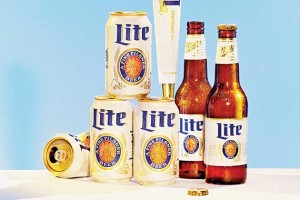 turned into a permanent new visual branding look. In conjunction with an advertising campaign centered around the release of the movie Anchorman 2 (set in the 1970s), the brand re-released its classic circa-1975 white Miller Lite can, complete with the retro logo design.
turned into a permanent new visual branding look. In conjunction with an advertising campaign centered around the release of the movie Anchorman 2 (set in the 1970s), the brand re-released its classic circa-1975 white Miller Lite can, complete with the retro logo design.
As for the result? Well, the numbers speak for themselves – the brand sold 32 million more cans during the campaign run compared to the same time the previous year, and has now expanded the nostalgic branding to its bottles and taps.
And don’t forget, just like every other aspect of branding, you have to follow the mantra of Tim McDermott, who is the 76ers CMO: “A brand isn’t just a TV spot. It is your soul, your DNA. It has to permeate through every fiber of the company.”
Image Sources:
https://espn.go.com/nba/story/_/id/12865822/sixers-score-ben-franklin-logo
https://www.bloomberg.com/bw/articles/2014-09-11/miller-lites-original-label-sales-boost
Addison Whitney is a global branding firm with a passion for building strong brands.
To learn more about Addison Whitney, visit our website at AddisonWhitney.com, or contact us here.
Don't Just Be a Brand - Live Your Brand
“Your Entire Company Should be Considered Your Branding Department.”
For both companies who are looking to create a build their brands to those who have set the benchmark for brand strength and longevity, this quote should stand as a mantra for creating a business culture where the core brand principles run throughout those in the organization.
It is one thing to “be” a brand, with a solid brand foundation built on the principles to which your brand stands, but to “live” the brand is to carry these same principles into your work and your interactions with those around you.
And this is how you truly spread the brand strategy to its fullest extent.
Every good brand portfolio and brand strategy should include actionable and personified elements, such as a brand personality and values. These are just two of many that make up a brand, but these elements are the ones best designed to be shown through the actions of your employees.
Those in your organization are the living, breathing, interacting faces and voices of your brand, who could potentially do more good (and also more bad) for it than any other aspect. You can have the world’s greatest logo, one that pops off advertisements and stands out among competitors, but if your own employees don’t believe in the brand characteristics for which that logo represents, then your brand strategy has a major flaw, and will continue to be playing from behind.
Another way to look at the concept of having your entire company be your “branding department” is that the widespread consumer mindset trusts individuals and in-person examples more than they trust advertisements and marketing materials. If they interact with an employee who truly understands how to live the brand and serves as a positive brand ambassador, then that impact will far outweigh what they see from a marketing standpoint.
As I mentioned before, this can also work the other way, which is often where the most problems arise. Especially for brands with established brand personalities, when an employee doesn’t embody those same characteristics, the uncertainty that arises about a brand can do great damage to its perception. This doesn’t just go for one-on-one interactions with consumers, but it also encompasses the actions of those same employees when working on behalf of the brand. Ethical breaches, crisis response, blatant mistakes that cause harm – they are all examples of not living up to the brand standard.
From the very top of your organization all the way down, your brand should be present in all of your employees and in how they act, speak and carry themselves – a strong brand is only as good as those who live it.
Addison Whitney is a global branding firm with a passion for building strong brands.
To learn more about Addison Whitney, visit our website at AddisonWhitney.com, or contact us here.
Are We Nearing the End of the iPhone Brand?
iPhone. At first glance, a funny-looking word. But now, a word that is synonymous with a technological revolution lead by Apple to transform the concept of a phone into something different – a helper, a messenger, a navigator, a photographer and more – with each evolution.
From a brand perspective, the Apple iPhone has to be one of the most recognizable consumer product brands in history, a household name like Tide or Coca-Cola, but at 300 times the investment.
The recognition for the brand is what poses our question. - Will the iPhone brand live forever? Or will it be replaced by an updated brand by Apple – an “ApplePhone” or something of the like?
The first question has to be “why?” Why would anyone ever remove the iPhone brand from the portfolio?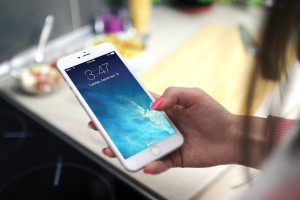
Well, for one, we are seeing a strategy shift from Apple to be more master-branded; that is, leveraging the “Apple” brand at the product level. We’ve now been introduced to the Apple TV, Apple Watch and Apple Pay, all backed by Apple Support. So simply from a brand portfolio strategy perspective, Apple Phone could be on the horizon.
A more likely reason for the change is that at some point the word “phone” in iPhone does not best represent the primary use of the device. Already, I would bet that a much greater percentage of time using an iPhone is spent browsing the internet, reading or listening to music, versus talking on the phone or even communicating through text message. At what point should iPhone be called something other than a phone?
This is true for the entire category – but could be a turning point for the product brand to make a stance and become AppleWhateverIsNext.
As it relates to whatever is next idea – how long can the number/letter extension garner the excitement Apple needs when launching a new device? iPhone 1,2,3,4,5,6, s, c and so on, sooner or later the name loses its luster. Is the change from iPhone 14 to iPhone 15 equally as exciting as the move from 4 to 5? Apple has used other extensions in the past (like nano, air, pro, etc.) but no naming strategy has been used as consistently as the number/letter system has been in the iPhone portfolio.
 Still, there will always be arguments that iPhone is here for good. The “i” platform was surely revolutionary at its launch. With what used to be the iPod, iPad, iMac and iTunes, the portfolio was set. Even as I use “iTunes” as an example, the future for that brand is unclear, with Apple launching Apple Music, a streaming music provider that may eventually replace iTunes, which may be a telling sign for the iPhone.
Still, there will always be arguments that iPhone is here for good. The “i” platform was surely revolutionary at its launch. With what used to be the iPod, iPad, iMac and iTunes, the portfolio was set. Even as I use “iTunes” as an example, the future for that brand is unclear, with Apple launching Apple Music, a streaming music provider that may eventually replace iTunes, which may be a telling sign for the iPhone.
Apple must know what is at stake if the iPhone is transitioned – years of equity and the risk associated with changing the name of one of the top selling technology products in history. That being said, Apple has never been afraid to support product launches and changes with huge amounts of money to educate the populous.
One thing is fairly certain, whatever the product is called in the future – personal technology by Apple will continue to be innovative and excite the industry and loyal brand advocates.
What do you think? iPhone forever? Or ApplePhone by 2017?
Addison Whitney is a global branding firm with a passion for building strong brands.
To learn more about Addison Whitney, visit our website at AddisonWhitney.com, or contact us here.
College Football’s Top 5 Brands
College football is a big-time player in the American sports scene, with billions of dollars spent and millions of fans heading to the stadium each weekend. With this enormous influence in our sports culture comes the emergence once again of brands who rival the biggest corporations in the world in terms of their brand equity.
With this list, I attempt to rank the top five brands in college football today – and as with any list, there is sure to be some friendly disagreement on who is on the list, where they are ranked and who I snubbed. I looked at the brands who are the first to come to mind when thinking of the sport in general, for whatever reason – and those reasons were varied.
One constant that is seen throughout this list is a high level of on-field success – in fact, there are a combined 45 national championships and over 4,000 all-time wins claimed by the schools on this list. While wins and losses alone don’t determine a strong brand, success does bring an ease to the branding process – people want to associate with winning teams, and they have more attachment to the overall brand when they come out on top more often than not.
However, winning was not the only factor in determining brand strength, but it was a benefit for those brands who have experienced more wins that losses throughout their histories.
The gold helmets. Touchdown Jesus. Notre Dame Stadium. The list of iconic brand elements could go on for the Irish, and that doesn’t even include the millions of fans around the world (and the millions of those who root against the team).
Notre Dame’s branding efforts correctly center on their many traditional and well-recognized aspects, which provide a link to their successful past (11 national championships and a record seven Heisman trophy winners), and proof of their relevance across cultural and generational bounds. No matter their record, interest in Notre Dame remains at the top of the list, as does their brand.
According to a recent report, Ohio State’s football program is worth over $1 billion, which is far and away the most valuable program in the nation. This brand valuation is a key force in driving the strength of their overall brand, providing a wealth (pun intended) of exposure, top-rate facilities, opening new revenue streams and allowing the school to put monetary support behind the football brand strategies necessary to keep them at the top.
They are the flagship school in a football-crazed state and an alumni base that crosses the globe, helping expand the brand equity outside of the Buckeye State borders. The combination of outstanding monetary support and brand awareness with the spoils that come with being the defending national champion have helped the Ohio State brand continue to excel.
At the opposite end of the spectrum of brand strategy from Notre Dame is the University of Oregon Ducks. Where they lack in years of success and iconic brand symbols they make up for in and instantly recognizable visual brand portfolio.
Oregon is capitalizing on their strong visual branding elements to build their brand strategy about how they look – completely with a full set of flashy uniforms that seem to change every week. They highlight their visual elements in all aspect of their brand strategy, from recruiting to marketing to the game day experience.
Alabama is one of the top representations of the power of brand advocates. Located in a state with no professional sports teams but a love of college football that is almost unsurpassed in the entire nation, Alabama has built a loyal fan base that carries its brand near the top of any rankings.
Despite their recent dominance, there were some stretches where the on-the-field product wasn’t top notch, but the loyalty of their brand fans did not waver, showing how strong the brand has ingrained itself in the people in their fan base.
When the three-lettered abbreviation for your school name carries as much verbal branding weight as any other full-named team in the country, that’s not a bad place to start when describing the strength of your brand.
The University of Southern California – USC – has long carried the torch for the west coast in the college football world. They have about as close to the perfect ingredients for the perfect brand as one school can get, where they can pull from years of success on the field, an idyllic location in the heart of Los Angeles, a famous logo and color scheme, prominent alumni and many more.
Image Sources
All Logos
Featured Image
Addison Whitney is a global branding firm with a passion for building strong brands.
To learn more about Addison Whitney, visit our website at AddisonWhitney.com, or contact us here.



